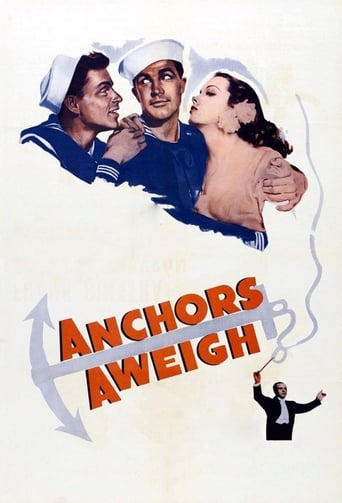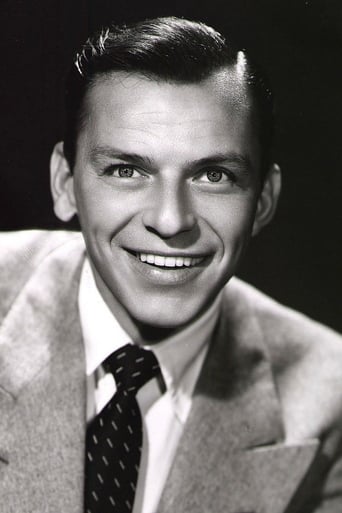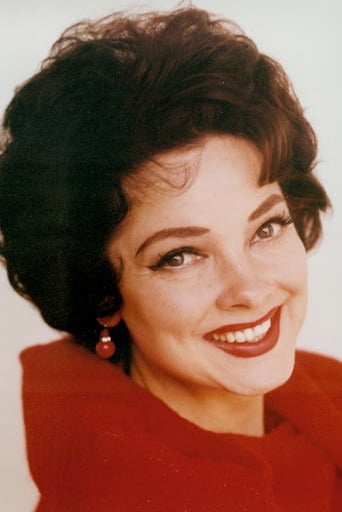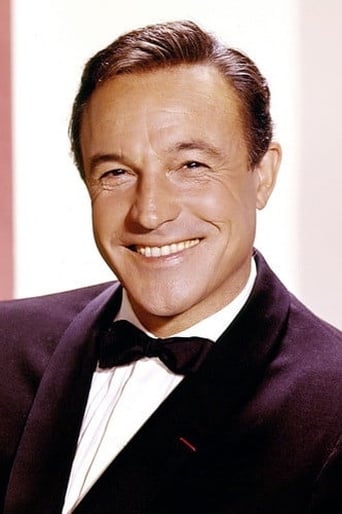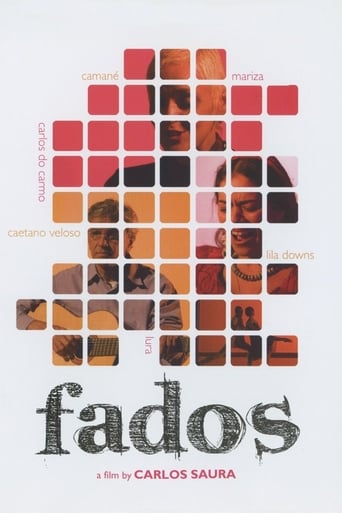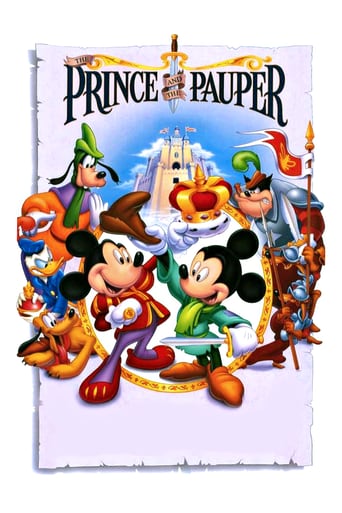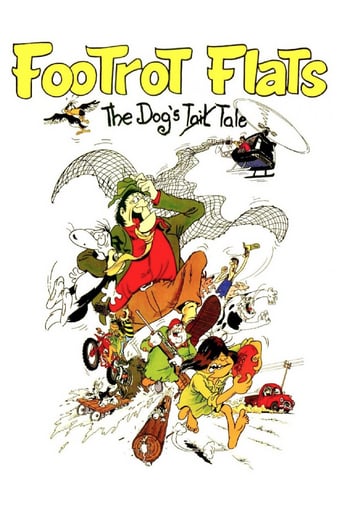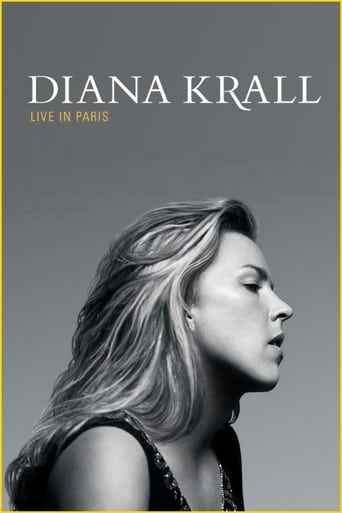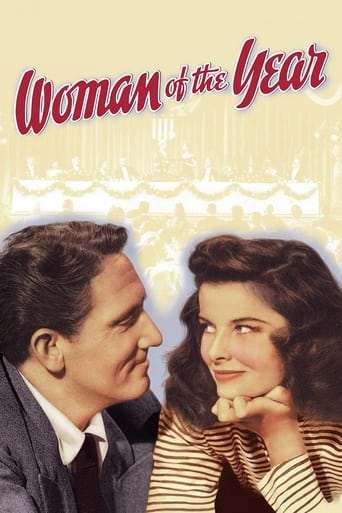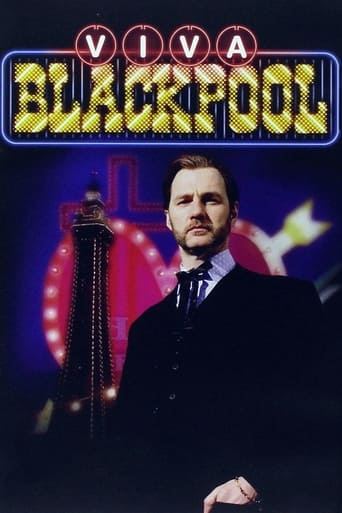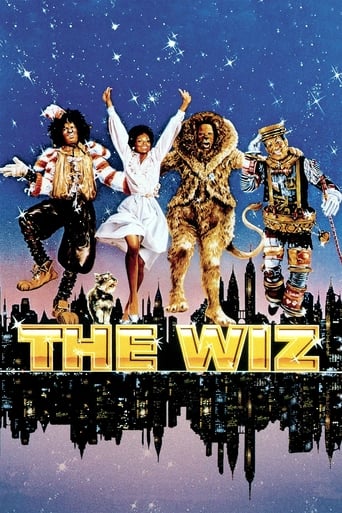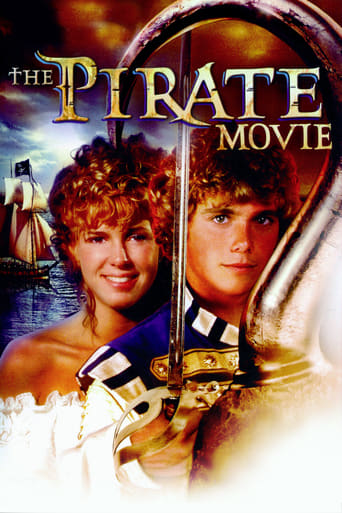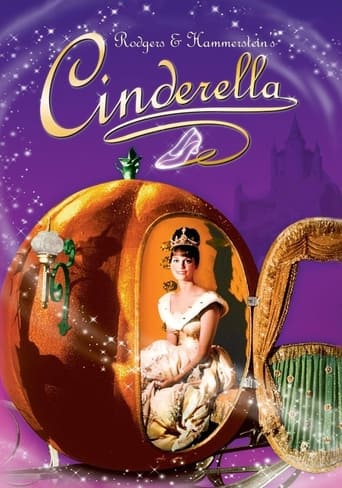Anchors Aweigh (1945)
Two sailors, Joe and Clarence have four days shore leave in spend their shore leave trying to get a girl for Clarence. Clarence has his eye on a girl with musical aspirations, and before Joe can stop him, promises to get her an audition with José Iturbi. But the trouble really starts when Joe realizes he's falling for his buddy's girl.
Watch Trailer
Free Trial Channels
Cast


Similar titles
Reviews
It is not only a funny movie, but it allows a great amount of joy for anyone who watches it.
The film makes a home in your brain and the only cure is to see it again.
The acting is good, and the firecracker script has some excellent ideas.
It is a whirlwind of delight --- attractive actors, stunning couture, spectacular sets and outrageous parties. It's a feast for the eyes. But what really makes this dramedy work is the acting.
NOTES: Stoll won the Academy Award for Best Scoring of a Musical Picture. The song "I Fall In Love Too Easily" was also nominated, but the voters preferred "It Might As Well Be Spring", a Rodgers & Hammerstein number from State Fair. The film was also nominated for 3 other Academy Awards including Best Picture (won by Lost Weekend), Best Actor - Gene Kelly (won by Ray Milland for Lost Weekend), and Best Color Cinematography (won by Leon Shamroy for Leave Her To Heaven).MGM's number two crowd-pleaser of the year (second to Valley of Decision) with an initial domestic rental gross of $4½ million. COMMENT: Here's the musical with everything: plenty of songs for Sinatra, some marvelous dances for Kelly, a bit of musical showcasing for Grayson, and a lot of ego-boosting conducting and piano-playing for the eagerly overconfident Mr Iturbi. The songs are delightful, the costumes appealing, the color ravishing - and there's a great support cast including Grady Sutton, Sharon McManus and Jerry Mouse. Kelly and Sinatra are both in fine form but - what is more important - they make an excellent team in what is now seen as a preliminary try-out for Take Me Out To the Ball Game. Unfortunately, what Anchors Aweigh lacks is a Jules Munshin-type comic foil. As it is, the story is too thin to support all the music. And what a pity that - although the film was lensed on the MGM lot - there are no surprise guest appearances.No matter. Kelly's dancing spots are so superbly inventive, they can stand by themselves. After a brisk work-out with Frank Sinatra (no mean high-flyer himself), Kelly partners sad-faced Sharon McManus, then grumpy Jerry Mouse (a zestful blending of live and cartoon action - four minutes of the most memorable moments in movie history) and finally dons Spanish cape for a dazzling solo in which he performs every swing of his own stunt-work. Sidney's direction is reasonably brisk. He tries hard to keep the thin plot moving along, despite the sheer weight of mundane (if reasonably believable) dialogue. In the musical numbers, the direction has polish and even occasionally invention (the under-the-piano shot of a transparent keyboard and the seemingly endless tracking shot of pianos in the Hungarian Rhapsody; the cleverly bizarre angles in Miss Grayson's studio audition). It also has a few deft dramatic moments, e.g. its inspired use of shadows in the sequence with Sinatra following Kelly through the streets.Kathryn Grayson's costumes are nothing short of electri¬fying. Her voice is recorded with more fidelity than usual and comes across particularly well in her "Jealousy" and "Waltz Serenade" numbers.Anchors Aweigh has all the earmarks and lavish production values we expect of an MGM musical. Full marks to the remarkably lush photography by Robert Planck (working in collaboration with Charles Boyle from the Technicolor Company) who can actually be seen standing by his camera in the sound-stage "audition" scenes. This strikingly colorful cinematography was deservedly nominated for an Academy Award. All in all, despite its thin and now dated plot, Anchors Aweigh remains one of MGM's most appealing musicals.
Made as World War II was drawing to a close (V-J Day was only a month and a half away at the time of its release) Anchors Aweigh never really aspires to be much more pleasant wartime escapism. As such, it aims low and hits the mark for the most part, but aside from a few standout sequences the film never really gels into a satisfying and cohesive whole.Following two sailors (Frank Sinatra and Gene Kelly) on shore leave in Los Angeles and their ensuing escapades, the film tries to do a bit of everything. There's some patriotic flag waving, gorgeously choreographed dance numbers, your standard love story, a fantasy interlude featuring Tom and Jerry (yes, the cartoons) and some backstage musical bits reminiscent of the Busby Berkeley films from the 1930s. However, as a result of trying to fit so much in, Anchors Aweigh feels overlong and drags quite severely in places.Kelly, Sinatra and their costar Kathryn Grayson try to keep the audience engaged through sheer star power, and their efforts are admirable (particularly Kelly's big solo number near the end of the film) but are never quite enough to compensate for the long stretches of tedium between the big musical set-pieces. The fact that the plot is pretty exists solely to convey us from one song to another is partially to blame. There's nothing really wrong with the writing, it just doesn't take any risks whatsoever. This usually doesn't bother me in musicals; for a 143 minute film however, I expect something a little more substantial.The film was a huge hit upon release (even generating some Academy Award nominations) and it went on to be a very influential film. Four years later, Kelly and Sinatra would star in On the Town, a film with pretty much the same plot as Anchors Aweigh, with the only major differences being it's set on the opposite coast (New York City to be specific) with an extra sailor tagging along.As flawed a film as it is, I can still appreciate Anchors Aweigh for launching the careers of Frank Sinatra and Gene Kelly. In you're a fan of either of them (or MGM musicals in general) this film is worth checking out, just don't expect too much from it.
There is a lot of music in this movie which is to be expected for a musical. I found the plot structure to be lacking in this film because of all of the music that they were trying to cram in to the film. Overall, I enjoyed the music although those who have a greater appreciation for music might be able to elaborate more on the positives and negatives of the musical elements of this film. The sound in this film was overall very good and made the film that much more realistic. The cinematography in this film helped to make a little more sense of all the music. The light in some parts of this film was almost overpowering and I think took aweigh (hahaha) from some of the action that was happening on screen.
In between the musical boom in the '30s, and the resurgence of the Hollywood musical in the early '50s with "An American in Paris" and "Singin' in the Rain", there was "Anchors Aweigh". A 1945 MGM musical starring Gene Kelly, Frank Sinatra, and Kathryn Grayson, what we have here is not by any means cinema at its finest; rather, it is simply that wonderful brand of lighthearted escapism that Hollywood was famous for in its golden age.The Hollywood musical didn't by any means die off in the '40s, but it reached a low-point in popularity, by comparison to the cornucopia of musicals from every major studio in the '30s. As we know, the German director Ernst Lubitsch, having migrated to America in '23, brought the musical to life. His 1929 film "The Love Parade", starring Maurice Chevalier and Jeannette MacDonald, was the first truly modern musical committed to the big screen. Lubitsch made several other similar musicals during the early '30s ("Monte Carlo", "The Smiling Lieutenant", and "One Hour With Your"). These films, made for Paramount, were, like everything Lubitsch, based in charisma, wit, and innuendo. After 1932, however, Lubitsch abandoned the musical, which was in the process of undergoing a vast transformation. The new musical was on the horizon, and it came bursting to life in 1933. RKO brought Fred Astaire and Ginger Rogers to the screen with "Flying Down to Rio". Warner Bros released three musicals helmed by the great Busby Berkeley: "42nd Street", "The Gold Diggers of 1933", and "Footlight Parade" -- all backstage musicals. MGM, who had a habit of, let's say, "borrowing" from Warner, released their own Berkeley knockoff called "Dancing Lady". Extravagance and spectacle were the name of the game now. Large, ornate sets saw the production of grand, elaborate musical numbers. Only Paramount remained relatively low-key, with musicals like "International House" and "College Humor". They were in the process of establishing names like W.C. Fields, George Burns, Gracie Allen, and, of course, Bing Crosby.This trend continued throughout the '30s. MGM released "San Francisco" and "The Great Ziegfeld", along with three followups to their 1929 musical "The Broadway Melody": "The Broadway Melody of 1936", "The Broadway Melody of 1938", and "The Broadway Melody of 1940". Warner Bros continued releasing Busby Berkeley musicals, like "Dames", "The Gold Diggers of 1935", and "The Gold Diggers of 1937". Paramount had Bing Crosby in full form by 1936 when they released "Rhythm on the Range", and two years later gave Bob Hope his feature debut in "The Big Broadcast of 1938", followed by "Give Me a Sailor", both of which costarred Martha Raye. RKO continued the now ultra-popular run of Astaire and Rogers films — "Roberta", "Follow the Fleet", "Swing Time", "Carefree", and others. And, finally, Fox hopped on the bandwagon with "Pigskin Parade" in 1936 (I'm sure there were Fox musicals before this, but I'm not familiar with any). Then, something happened. The war. World War II saw the necessity for propagandistic war films surging, which cut into the popularity of the musical. Or maybe musicals simply had run their course. In either case, the early '40s saw a significant drop-off in the production and popularity of Hollywood musicals. The one major exception was Fox. They kept the musical alive through the war years, with lavish Technicolor films starring the likes of Betty Grable, Alice Faye, and Don Ameche (i.e. "Down Argentine Way", "That Night in Rio", and "Moon Over Miami").Interestingly, it is these Fox Technicolor musicals from the early '40s that provided the most obvious inspiration for MGM's "Anchors Aweigh". Not only the use of color, but the general style and aesthetic of the film is very similar to Fox's musicals from earlier in the decade. Later, "Anchors Aweigh" would evolve into MGM's famous musicals from the early '50s — "An American in Paris" and "Singin' in the Rain" — which also starred Gene Kelly, and triggered the rebirth of the Hollywood musical. Gene Kelly is absolutely the centerpiece of this film. He is wonderful. He's among the most charismatic screen presences I've seen in Hollywood's history, and it never shows more than it does here. Kelly carries this film. Kathryn Grayson is decent in the lead female role, and Sinatra, the film's costar, is solid enough. I've never been that big on Frank Sinatra, but I find his younger self in this film much more amiable than his later roles."Anchors Aweigh" is gorgeously shot. Like virtually all Hollywood commercial films, it lacks any artistic ambition, but the technical skills demonstrated by those who collaborated on the film are immense. The set design is extraordinary. The lighting is impeccable. Visually speaking, it's an amazingly attractive film, and at times it even seems to possess a distinctly painterly quality, which we are now bereft of with the digital realism of modern cinema. There is a side role for Dean Stockwell, a child actor who was popular at the time, and has been acting ever since. This was his second role. Also notable is José Iturbi, the Spanish conductor and piano prodigy who plays himself in the film. His presence reminds us of Oscar Levant in "An American in Paris". Iturbi has multiple piano performances in the film, and they are truly a pleasure to behold. What a talent.Overall, this is a solid film. In the world of Hollywood musicals, I'd say it's a very good film. It's long, but it never gets tedious. It's good fun from start to finish. The musical numbers aren't astonishing, but they're good, on the whole. At the end of the day, though, Gene Kelly is the reason to show up for the film, and the reason to stay until it's over. His screen personality is very fun and a joy to watch, and that's about how I'd sum up the film itself.RATING: 6.67 out of 10 stars

